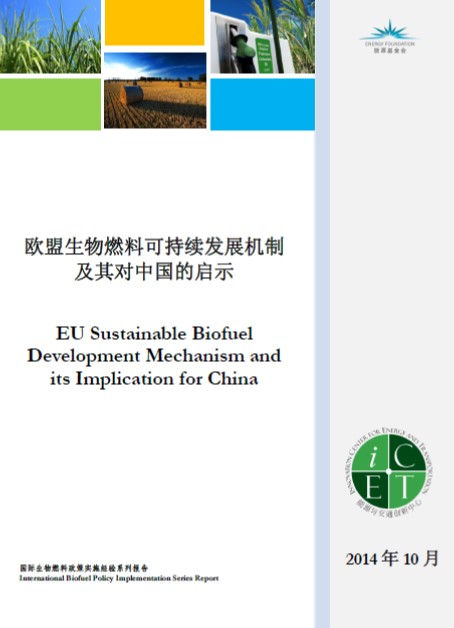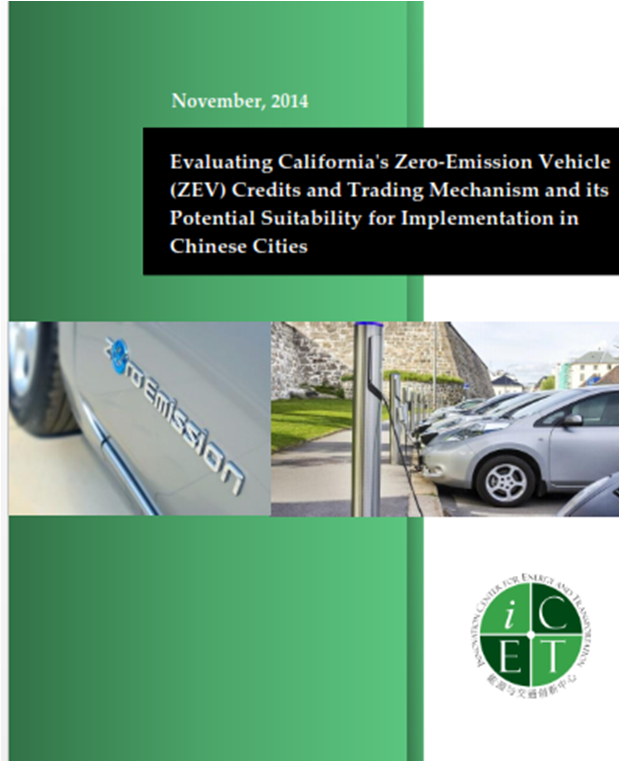Research Reports
China Passenger Vehicle Fuel Consumption 2015 Development Annual Report (Dec.2016/Clean Transportation Program)
It has been 9 years since China's fuel consumption standards went into their implementation phase. During this period, China's domestic average fuel consumption improved from 8.16L/100km to 7.12L/100km (if incorporating the contributions brought by new energy vehicles). China's overall per-km fuel consumption was reduced by 12.7% during this period, with an average annual decrease of about 3%. This report utilizes key indicators that track the development of China’s CAFC standards implementation on the vehicle level, single company and corporate level, and from an NEV perspective.
2015 Green Car China Annual Report (September 2015 / Clean Transportation Program)
This year's report presents the Top green performing models out of China’s Top 50 selling cars of 2014, as well as Top 10 green performing models in each of nine different car segments (hybrids, small, compact, mid-size, large, luxury, SUV, MPV, sports car). The sales of China's top 10 best-rated cars on the green rating out of the best 50 sales have reached 3.098 million, accounting for 15.7% of the annual total passenger vehicle sales, which have increased by nearly 60%. Among them, there are four models ranked in the Top 10 best-selling cars, and the overall proportion has increased compared to last year. This year, the Toyota LEXUS CT200h achieved the best green score and a relatively good smog score of 1.5 (Japanese manufacturers typically score well on the smog index). Among independent brands, Changan mini received a remarkable green score of 7.0, and its outstanding smog score was 1.4. The result is attributed to not only its small engine size and low fuel consumption level, but also to efforts made by its manufacturer to curb tailpipe emissions.The report is based on MEP-VECC contributed smong data and has received the support of the UNEP.Best performing models have granted their manufacturers with an annual award distributed in a dedicated Gala Dinner in changzhou on September 23.
China Real World and Certified Fuel Consumption Gap Analysis (July 2015 / Clean Transportation Program)
Although the “light vehicle fuel consumption test method" standard was released over ten years ago (in 2004) and light vehicle labeling regulation was release over five years ago (in 2010), most vehicles’ actual fuel consumption is higher than the certified fuel consumption value. The status today is even more complex, since there is little information on actual fuel consumption levels. iCET in collaboration with China BearOil App collected over 210,000 valid samples of fuel consumption levels reported by drivers from various locations in China between 2008 and 2014 and an average of the reported values was compared with China’s fuel consumption certification. The analysis performed in this study therefore introduces a novel attempt to provide stakeholders with some insights that could hereafter be more thoroughly studied.
Zero Emission Vehicle Credits: China Program Design Inputs Brief (June 2015 / Clean Transportation Program)
This brief is meant to inspire Chinese EV stakeholders to converse on the topic of ZEV program design and action plan for China. A former iCET report described the California ZEV program, evaluated its effectiveness through qualitative and quantitative research, and studied its history and inception process. This former work was introduced to national and local stakeholders in China, including the government, academic, and private sectors through workshops, roundtables and meetings. The process of stakeholders’ engagement was important on its own, as it unveiled concerns and challenges facing a China-tailored program. These topics are presented in this brief.
China Green Car Methodology Upgrade Report (May 2015 / Clean Transportation Program)
iCET’s flagship China Green Car (CGC) ranking system methodology is based on the American Council for an Energy-Efficient Economy (ACEEE) method logy, a globally leading vehicle life-cycle health and environment impact assessment. As the ACEEE is being adjusted every year according to vehicle and power technology improvements, and as China’s data inputs collected by iCET are also evolving rapidly, this report studies these changes and provides adequate revisions to the traditional CGC for ICE vehicles that have been developed in 2006. Furthermore, this report studies the life-cycle emissions and health impacts of electric vehicles (EVs) and suggests a new CGC methodology tailored for EVs in China.
Calculating Urban Transportation Emissions - PrivateVehicles: Lessons from existing tools’ development, design and implementation (Oct.2015/Clean Transportation Program)
This report is designed to provide context to iCET's City Transport Emissions Calculator and screen existing transport emissions modeling approaches available in China and abroad, best-practices and limitations for the purpose of measuring urban transport emissions towards more informed clean transportation planning and policy-making. Since private vehicles are argued to have a greater impact on emission reduction than freight transport due to the surge in private car population and its low energy efficiency, the private vehicle segment was chosen to be introduced prior to the public and freight urban on-road segments. The calculator, which will be fruit of this initial work, is meant to be simple to use, include state-of-the-art default values, and be publically available both online and through MoT's clean urban transport planning lab.
2015 China Green Car Finalists (May 2015 / Clean Transportation Program)
Since 2006, iCET is promoting the China green Car system in collaboration with China’s Vehicle Emissions Control Center of the Ministry of Environmental Protection (VECC-MEP). Since 2010, the China Green Car system became available both through a dedicated online user-friendly website and as an annual report release every June. In 2014 the China Green Car system received the esteemed support of the UNEP, which enabled the use of vehicle tailpipe health impact figures provided by VECC-MEP for constructing an additional vehicle smog index.Apart from tailpipe emissions, the ranking system is also based on fuel consumption, and vehicle curb-weight. In early 2015, iCET completed its periodic calculation update and created an EV evaluation method. China Green Car is meant to guide a more stringent regulatory framework governing private vehicle development in China, inform industry players of their relative performance, and assist consumers to make more sustainable vehicle purchase choices. This booklet highlights the finalists of the initial CGC assessment,following which a public testing of vehicle during the Global Clean Vehicle Summit will determine the top-ranked car models in terms of their environmental performance for the year 2015.

EU sustainable Biofuel Development Mechanism and its Implications for China(November 2014 / Clean Transportation Program)
This study is aimed at introducing to Chinese stakeholders the EU-Renewable Energy Directive and Fuel Quality Directive experiences and practices, as well as advancing the development of sustainable low-carbon alternative fuel production and certification.

Evaluating California’s Zero-Emission Vehicle (ZEV) Credits and Trading Mechanism and its Potential Suitability for China
The report introduces the innovative California ZEV-Credits program and evaluates its effectiveness through a case study of the world’s leading electric automaker Tesla Motors, experts interviews, quantitative impact assessments, and extensive meta-analysis. The report has demonstrated the capacity building the ZEV credits program provides for small manufacturers in a fast evolving and highly dominated market place. As identified by national and local key stakeholders, a similar scheme tailored for China may advance local technology solutions and vehicle standard implementation, and be linked to broader emissions trading platforms.

2014 China Annual Corporate Average Fuel Consumption (CAFC) Report
This year’s report is iCET fourth annual report which tracks China’s fuel economy implementation status, trends and recommendations.This year report is unique as it examines the first-ever corporate reported average fuel consumption recently made publicly available by MIIT,studies new energy vehicles potential contribution to auto manufacturers in meeting their limits and standards; identifies trends and implementation issues by corporate type (importing, independent domestic manufacturers etc.), and provides policy recommendations towards the new standard design and implementation.